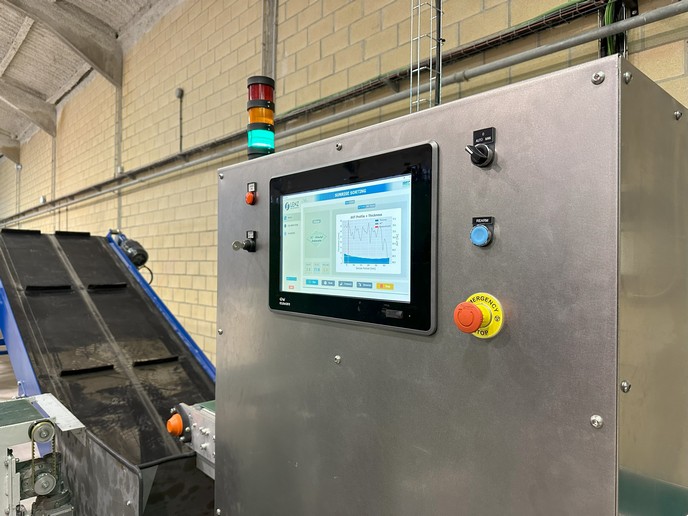Addressing the key barrier to wider adoption of a sustainable concrete
Concrete is the world’s most consumed construction material and the most used material after water. It is made from cement, and cement production contributes about eight per cent of global CO2 emissions while requiring a tremendous amount of water and natural mineral resources. Finding a more environmentally friendly alternative is a priority. Geopolymer concrete (GPC) could be the answer, but its unpredictable behaviour in the case of fire must be addressed. With the support of the Marie Skłodowska-Curie Actions (MSCA) programme, the TemGPC project characterised GPC’s thermal and mechanical properties under myriad conditions. Outcomes have created the foundation for knowledge-based design of improved GPC.
Geopolymer concrete versus conventional concrete
Portland cement is manufactured by heating limestone and aluminosilicate rock (such as clay or shale) in a rotary kiln at temperatures of up to 1 500 °C. Water is mixed with the powdered cement, sand is added to make cement mortar, and aggregates (large stones) are added to make concrete. GPC’s production eliminates limestone quarrying and high-temperature processing, and reduces water requirements. This is because geopolymer cement is produced by dissolving aluminosilicate materials (from a variety of industrial by-products or waste) in an alkaline-activating solution at mild temperature, resulting in geopolymerisation. Similar to OPC concrete, geopolymer mortar and GPC are produced by adding sand and coarse aggregate, respectively, into the geopolymer mixture. Despite its advantages, GPC’s behaviour in a fire is unpredictable and potentially dangerous. GPC is a porous material. “Pore pressure can build rapidly as the water trapped in pores vaporises. This can cause the concrete to explosively break apart (known as explosive spalling). To mitigate the risk, it is essential to understand the thermal and mechanical behaviour of GPC at elevated temperatures,” explains project supervisor Long-yuan Li of the University of Plymouth.
Experimental and theoretical investigations
MSCA fellow Min Yu conducted an extensive experimental and theoretical investigation of geopolymer mortar and GPC with and without steel fibres, in unloaded and preloaded materials, and at various elevated temperatures and post-fire conditions. From measurements of compressive strength, elastic modulus, peak strain, ductility and thermal strain, Yu developed theoretical stress-strain constitutive equations. Experimental studies of transient strain informed a theoretical model to predict it. Finally, “a finite element analysis model for coupled heat transfer, mass transfer, and thermal-mechanical stress analysis was developed using COMSOL. The numerical analysis was used to reproduce the failure modes of geopolymer mortar and GPC specimens observed in both the steady-state and transient-state tests,” explains Yu.
Fire performance potentially better than OPC concrete
TemGPC’s experimental data provide a benchmark for GPC. Its theoretical models can be used to predict the fire resistance of GPC, supporting the fire-safe design of concrete structures made with GPC. Importantly, “our experiment tests demonstrated that GPC has different thermal and mechanical properties from OPC concrete. However, if it is designed and mixed properly, the GPC could have better fire performance than the OPC concrete,” summarises Yu. GPC’s environmental benefits, durability and performance characteristics have made it an attractive alternative for sustainable construction, particularly in harsh and aggressive environments. TemGPC’s tools have addressed a major concern, paving the way for new and improved GPC and a more environmentally friendly construction sector.
Keywords
TemGPC, GPC, concrete, fire, geopolymer, cement, OPC, geopolymer concrete, finite element analysis, explosive spalling, ordinary Portland cement







